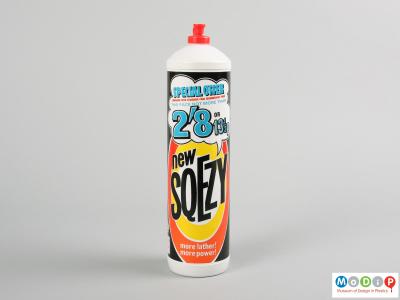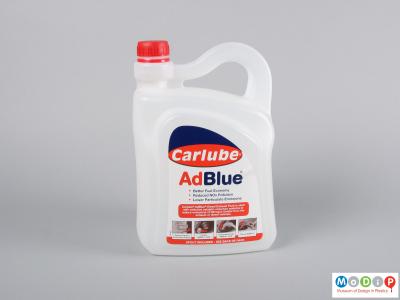Process: A hollow tube (parison) is continuously extruded (see extrusion). Once the parison has reached the required length, a two-part metal mould closes around it. Compressed air is blown into the tube, the pressure inflating the plastic to fill the cavity. Once cooled the piece is removed from the mould and excess material trimmed.
Introduced: Originating from the process of glass blowing, the first application referencing polymers was patented in the 1880s using cellulose nitrate. Commercial blow moulding production began in the late 1930s with the development of polyethylene.
Plastics: Commonly high density polyethylene and polyethylene terephthalate.
Marks: A pinch line on the bottom. Sometimes a thin rim is visible running vertically around the sides, left by the split mould.
Tooling cost: Relatively high.
Production volume: High.
Uses: Hollow articles, usually with openings of smaller diameter than the body such as bottles or containers.



